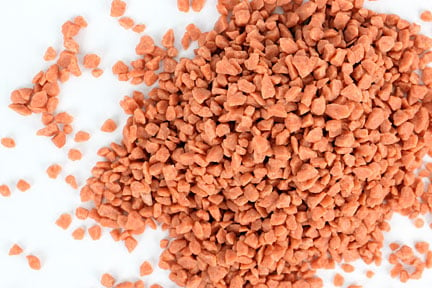Modern potash processing is a relatively succinct practice, with today’s leading manufacturers boasting decades of experience generating quality potash products. However, the potash industry actually got its start using a very different process altogether. From its early days as a by-product of burned wood, to its current prominence as a granular fertilizer in the agricultural industry, potash and its production processes have a remarkable past.
Early Potash Processing
Even though potash is one of the most common elements found on Earth, for centuries it was produced without mining. The early potash industry actually created this element from wood, with the ‘pot-ash’ name reflecting how this naturally occurring substance was initially manufactured.
First, wood (typically hardwood) was burned to ashes. The wood ashes were collected into a pot with water, and then leached to produce lye. At this point, the lye solution was a basic phase of potash and could be used to manufacture products such as soap. The lye solution could also be processed further using heat (either boiling or baking) to evaporate the remaining water; this evaporation process produced potash.
Rising Potash Demand in the 18th and 19th Centuries
Early potash was used to make products such as soaps, dyes, glass, baked goods, and gunpowder. With so many uses, the demand for potash constantly grew. Unfortunately, the existing process was tedious, requiring a large amount of lumber to create only a small quantity of potash. Consequently, early potash producers struggled to adjust their techniques to meet growing demands, though in 1790, the first U.S. patent was issued for an improved potash process. Despite efforts at advancement, these early potash production methods were unable to generate sufficient amounts of quality potash to meet global needs. As a result, the production of potash from wood diminished after large-scale potash mining was established.
Eventually, potash reserves were discovered all over the world, including the United States, Canada, Russia, England, and Brazil. The discovery of large natural potash deposits made the element readily available to existing potash products, solving demand issues. Mining also opened opportunities for large scale use of potash in industries such as agriculture.
Current Uses and Processes for Potash
Although potash was used for centuries as a fertilizer, mining made it readily available in mass quantity to the farming industry. Today, the lion’s share of all potash is mined for use in fertilizers in the agriculture industry. With global decreases in available farmland and continual population increases, fertilizer’s ability to increase crop yields has become more and more important in the last few decades, raising the demand for potash even higher.
Accordingly, mining led to major changes in the use of potash. The mined ore required a whole new class of processes (e.g. material separation, size reduction, compaction granulation, and drying) to prepare potash for commercial use. In addition, the industries in which potash was being used also required new material developments.
For example, in order to process potash for its role in the agriculture industry, it was determined that compaction granulation was the best method to produce cost effective and consistent potash granules that easily blends into a fertilizer. Similarly, potash drying has been used to add resistance to attrition, an exceptional material handling benefit when managing fertilizer. These practices are just a few of the necessary processes used to manufacture potash today.
With such a diverse history, there is no telling what the future holds for the potash industry. However, it is safe to assume that potash will continue to play a vital role in many global industries for years to come.
FEECO has been processing potash for over 60 years, helping the agriculture industry to bring better products to market to meet growing food demands. From potash dryers and compaction granulation circuits, to product development, feasibility testing, and complete processes, FEECO is a complete solutions provider for the potash industry.
For more information on current or custom potash processing solutions, contact us today.


